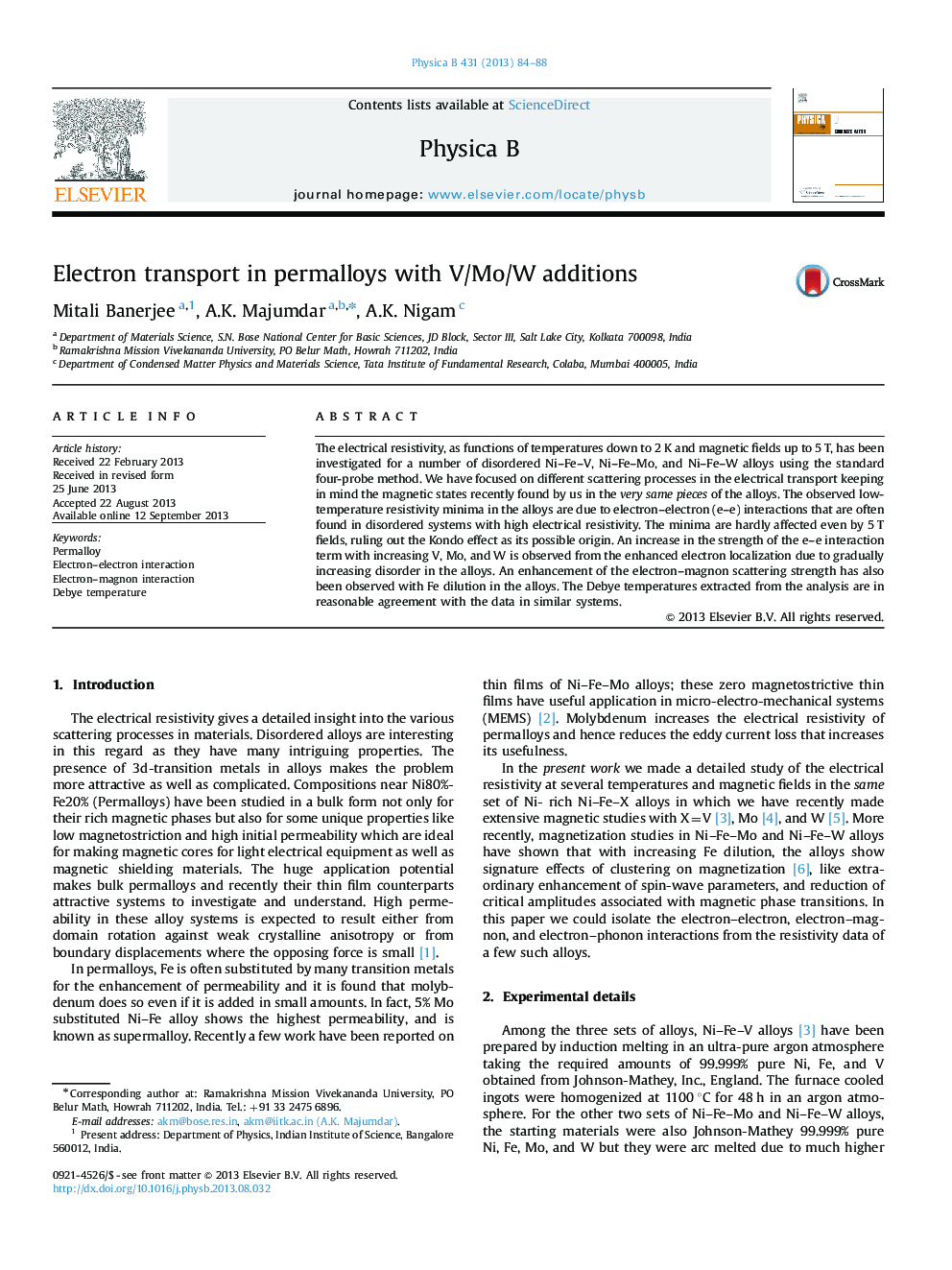| Article ID | Journal | Published Year | Pages | File Type |
|---|---|---|---|---|
| 1809739 | Physica B: Condensed Matter | 2013 | 5 Pages |
The electrical resistivity, as functions of temperatures down to 2 K and magnetic fields up to 5 T, has been investigated for a number of disordered Ni–Fe–V, Ni–Fe–Mo, and Ni–Fe–W alloys using the standard four-probe method. We have focused on different scattering processes in the electrical transport keeping in mind the magnetic states recently found by us in the very same pieces of the alloys. The observed low-temperature resistivity minima in the alloys are due to electron–electron (e–e) interactions that are often found in disordered systems with high electrical resistivity. The minima are hardly affected even by 5 T fields, ruling out the Kondo effect as its possible origin. An increase in the strength of the e–e interaction term with increasing V, Mo, and W is observed from the enhanced electron localization due to gradually increasing disorder in the alloys. An enhancement of the electron–magnon scattering strength has also been observed with Fe dilution in the alloys. The Debye temperatures extracted from the analysis are in reasonable agreement with the data in similar systems.
